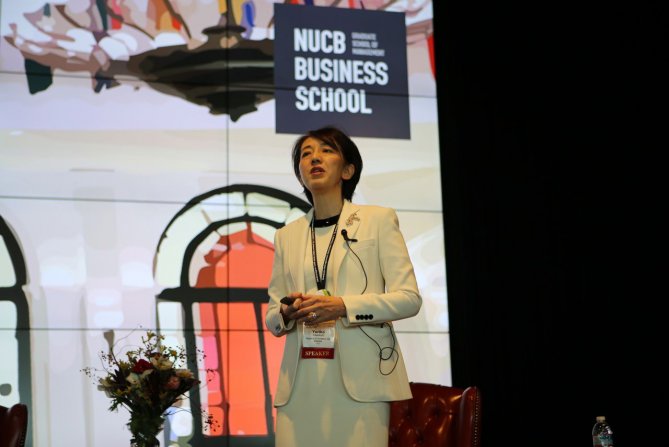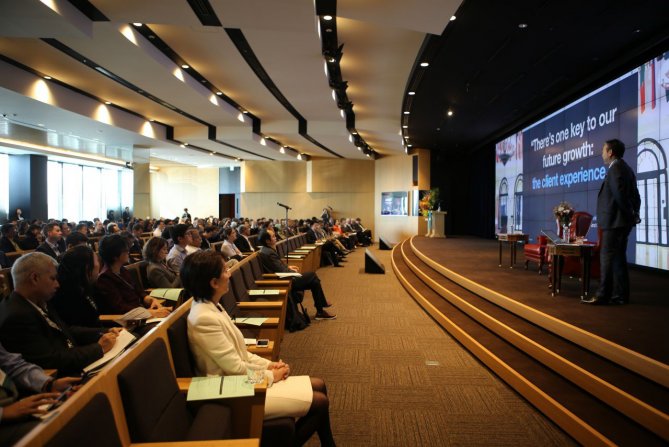Design Thinking - Topics at AACSB Asia Pacific Annual Conference 2018
The 2nd day of the AACSB Asia Pacific Annual Conference of 2018 started with a keynote about the Transformation Towards Design Driven Institutions by Yuriko Sawatani, Professor and Director of Center for Entrepreneurship at the NUCB Business School, our Graduate School of Management, and Hideki Shibata, Senior Design Manager at IBM Japan.
Service Design & Design Thinking
Prof. Sawatani has worked at IBM, where one of her major research was service research, and also established service science research in Japan before joining Waseda University and then NUCB Business School. Speaking about her researches, she outlined the importance of Design Thinking and how it has been influencing the workplace and the education sector.
In the recent years, the world has seen a shift from product to service thanks to advances in technology resulting in innovation as well as the increasing demand by customers, ultimately leading to the creation of the service economy.
The demand also paved the way to service systems in order to better satisfy the customers and the service system is all about interactions (internal at the organizational and individual level and external with the customers and stakeholders). Meanwhile, the service design adopts a holistic approach to incorporate all the related actors and their interactions to enable the creation of an optimal service experience.
For such an important transition in any economy, Prof. Sawatani believes that Design Thinking will be very good and helpful to transform from product to service. And thus, methodology takes an important place amongst technology and knowledge for science innovation.
The Japanese Ministry of Education, Culture, Sports, Science, and Technology (MEXT) saw the importance and influence entrepreneurs are having on the economy and how they are able to answer the ever-growing demands of the customers. Thus, they established the EDGE (Enhancing Development of Global Entrepreneur) program to support the formation of sustainable innovation and ecosystem by collaborating with universities, venture capitals, international institutions, and private enterprises to ultimately revitalize innovation in Japan. In order to develop the necessary skills and behavior, they placed emphasis on Active Learning and Design Thinking.
How can Design Thinking be applied in management education?
The Harvard Case Method is a widely applied and proven method of teaching in management education (we also use the case method at both undergraduate and graduate level). However, Prof. Sawatani stresses that the Field Method should be equally important as it provides crucial insight through empathy to the current environment and situation, and this is where Design Thinking will prove its usefulness. Indeed, both methods are in fact complementary and enhance the bigger picture.
Also at the NUCB Undergraduate School, we always strive to innovate our education and Design Thinking has become an important part of the curriculum. Prof. Sawatani taught Service Design at the NUCB Business School to string together education and community through social innovation, in order to expand from companies to a whole ecosystem. In her own words: Design Thinking will be useful to address complex issues.
How to summarize the steps of Design Thinking?
In very short, it usually goes through 5 crucial steps:
- Empathize (observe the environment and situation to understand)
- Define (determine the problems and gain insights)
- Ideate (innovate and create a concept)
- Prototype (build a solution)
- Test (present the solution and receive feedback)
Story of IBM
Both Prof. Sawatani and Mr. Shibata outlined how IBM adapted Design Thinking by introducing it to all its employees. This has led to the creation of 43 IBM Studios around the world with 1600 Designers and even Design Thinking badges to showcase how It has become a crucial skill at the multinational.
At IBM iX (Introductory Experience), building business by design is the way forward and the following method is applied: People, Places, and Practices lead to Outcomes, with Design Thinking being the framework of Practices.
The principle is to focus on user outcome through multidisciplinary teams and restless innovation. With the philosophy that everything is a prototype, this restless innovation is enabled through 3 steps: observe, reflect and make (in a loop). Thus, they were able to release more than 70 products and support more than 100 clients.
According to a Forrester Total Economic Impact™ study commissioned by IBM in February 2018, Design Thinking will lead to getting products 2x faster to the market and increase the return on investment by 300%.
Mr. Shibata quoted IBM Global Business Services’ leader, Bridget van Kranlingen: “The last best experience that anyone has anywhere, becomes the minimum expectation for the experience they want everywhere”, to outline that the key to future growth is client experience and constantly developing it.
This is exactly what Design Thinking offers throughout its innovative and creative processes.
Some companies, such as SAP, have settled with this mindset to become more customer-oriented since 2004, applying Design Thinking to strategy first, then to R&D for new product development and finally to business departments. And more organizations around the world are finally embracing everything Design Thinking has to provide.

 過去問題
過去問題
 イベント
イベント
 入試情報
入試情報
 ネット出願
ネット出願





